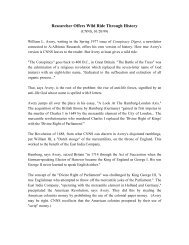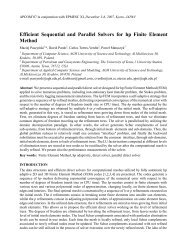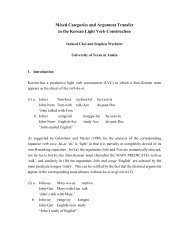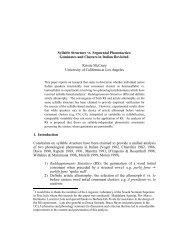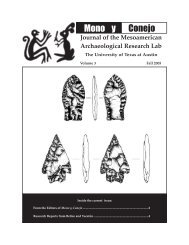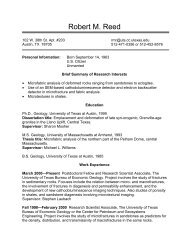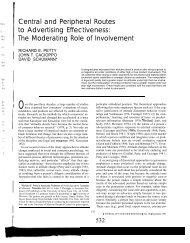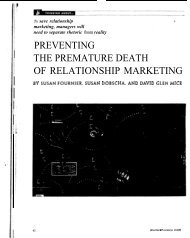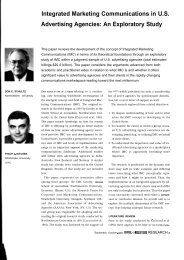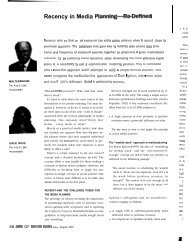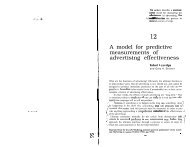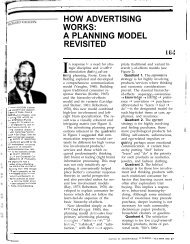Quantitative comparison of processes of oil- and water-based mud ...
Quantitative comparison of processes of oil- and water-based mud ...
Quantitative comparison of processes of oil- and water-based mud ...
Create successful ePaper yourself
Turn your PDF publications into a flip-book with our unique Google optimized e-Paper software.
equal to 0.1, 0.4, <strong>and</strong> 0.5 for <strong>water</strong>, EMUL, <strong>and</strong> MC16, respectively.<br />
Surfactants contained in the OBM reduce the interfacial tension between<br />
<strong>oil</strong> <strong>and</strong> <strong>water</strong> Skalli et al., 2006 <strong>and</strong> hence make the rock<br />
preferentially <strong>oil</strong> wet Van et al., 1988; Yan <strong>and</strong> Sharma 1989.<br />
As shown in Figure 9, such effects are accounted for by decreasing<br />
the capillary pressure Salazar et al., 2007<br />
<strong>and</strong> by simultaneously changing the value <strong>of</strong> critical<br />
<strong>water</strong> saturation <strong>and</strong> end points on the relative<br />
permeability curves Carlson, 2003. We observe<br />
that the presence <strong>of</strong> surfactants in the OBM<br />
max causes lower values <strong>of</strong> qmf <strong>and</strong> steeper slopes in<br />
the time variations compared to the cases <strong>of</strong><br />
WBM or OBM with no surfactants after the instantaneous<br />
rate has taken place. Table 1 describes<br />
the properties for each fluid component<br />
assumed in the simulation.<br />
Effect <strong>of</strong> the flow rate <strong>of</strong> invasion on<br />
<strong>water</strong> saturation<br />
We simulated the <strong>processes</strong> <strong>of</strong> OBM- <strong>and</strong><br />
WBM-filtrate invasion assuming the different<br />
modalities <strong>of</strong> flow rate described above, namely,<br />
constant, step, <strong>and</strong> time variable. Figure 10 shows<br />
radial distributions <strong>of</strong> <strong>water</strong> saturation for the<br />
base-case OBM S win 100%, whereas Figures<br />
11 <strong>and</strong> 12 show radial distributions <strong>of</strong> <strong>water</strong> saturation<br />
<strong>and</strong> salt concentration for the base-case<br />
WBM S win 30%, respectively. Such radial<br />
distributions were calculated with the previously<br />
defined flow rates after 0.5 hours, 2.35 hours,<br />
1 day, <strong>and</strong> 3 days <strong>of</strong> <strong>mud</strong>-filtrate invasion, in that<br />
order.<br />
We observe that invasion with a constant or<br />
step rate yields the same radial distributions S w<br />
<strong>and</strong> NaCl because the duration <strong>of</strong> the instantaneous<br />
rate is too short to account for a large volume<br />
<strong>of</strong> invading fluid. The instantaneous fluid<br />
loss lasts 27 <strong>and</strong> 22 seconds for the OBM <strong>and</strong><br />
WBM cases, respectively. When invading with a<br />
time-variable flow rate, we do observe a difference<br />
<strong>of</strong> 15% for the case <strong>of</strong> OBM more <strong>oil</strong> <strong>and</strong><br />
8% for the case <strong>of</strong> WBM more <strong>water</strong> in the<br />
shape <strong>of</strong> the radial distributions at late times after<br />
one day <strong>of</strong> invasion. However, the total volume<br />
<strong>of</strong> fluids invading the formation is the same for<br />
constant, step, <strong>and</strong> variable rates, which causes<br />
the maximum radial length <strong>of</strong> invasion to be approximately<br />
the same for all cases. Based on this<br />
behavior, in the remaining examples <strong>of</strong> <strong>mud</strong>-filtrate<br />
invasion described below we assume a timevariable<br />
flow rate <strong>of</strong> invasion.<br />
Effect <strong>of</strong> the flow rate <strong>of</strong> invasion on<br />
the radial length <strong>of</strong> invasion<br />
Comparison <strong>of</strong> Figures 10 <strong>and</strong> 11 indicates that<br />
WBM filtrate entails radially deeper invasion<br />
Comparison <strong>of</strong> OBM- <strong>and</strong> WBM-filtrate invasion E65<br />
than OBM filtrate. After three days <strong>of</strong> invasion, OBM filtrate penetrates<br />
0.81 m radially into the formation, whereas WBM filtrate penetrates<br />
1.12 m, which is 39% deeper than for the case <strong>of</strong> OBM. At<br />
early times in the invasion process 12 hours, WBM filtrate penetrates<br />
15% to 20% radially deeper than in the case <strong>of</strong> OBM filtrate.<br />
a) b)<br />
c) d)<br />
Figure 8. Calculated flow rate <strong>of</strong> invasion as a function <strong>of</strong> time q mft, shown in black<br />
triangles for the various cases <strong>of</strong> OBM- <strong>and</strong> WBM-filtrate invasion. Constant q mfave,<br />
shown in red <strong>and</strong> step q mfstep, shown in blue rates were calculated as average values over<br />
three days <strong>of</strong> <strong>mud</strong>-filtrate invasion. Part a describes the base case OBM 100% <strong>water</strong><br />
saturated invaded with single-component OBM MC 16; b describes the same case<br />
with 30% <strong>water</strong> <strong>and</strong> 70% <strong>oil</strong>; c describes the base case with initial <strong>water</strong> saturation S win<br />
equal to 30% with invading fluid formed by <strong>water</strong> <strong>and</strong> surfactant emulsified within MC 16;<br />
finally, d describes the base case WBM with S win 30% WBM-filtrate invading a partially<br />
<strong>oil</strong>-saturated rock. In each part, t SL designates the duration <strong>of</strong> the spurt loss.<br />
a) b)<br />
Figure 9. Water-<strong>oil</strong> capillary pressure a <strong>and</strong> relative permeability b curves assumed in<br />
the simulations <strong>of</strong> <strong>mud</strong>-filtrate invasion with <strong>water</strong> <strong>and</strong> surfactants emulsified in the<br />
OBM <strong>water</strong>, EMUL, <strong>and</strong> MC 16. Notice that capillary pressure decreases, the end points<br />
<strong>of</strong> relative permeability change, <strong>and</strong> critical <strong>water</strong> saturation is less than 50% compared<br />
with the base case shown in Figure 2.<br />
Downloaded 29 Jul 2009 to 128.83.167.137. Redistribution subject to SEG license or copyright; see Terms <strong>of</strong> Use at http://segdl.org/



